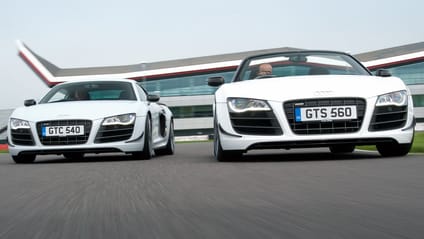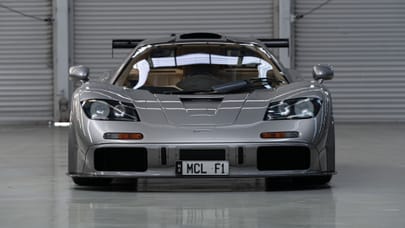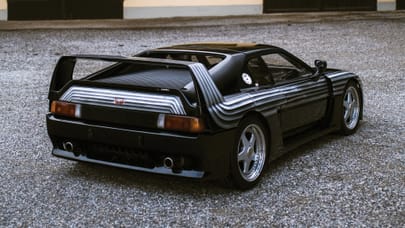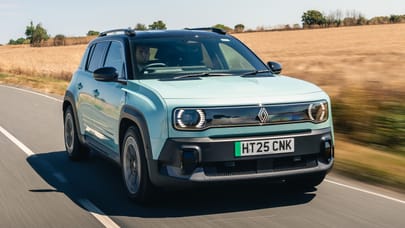
A short history of the mighty V10 engine, and the greatest hits
We look back at the key milestones of the V10, and the cars that wrote its legend

1963: the first V10

The first production V10 is in the Porsche designed Leopard main battle tank. It’s a supercharged 37.4-litre diesel with 820bhp, made by German company MTU, founded by Wilhelm Maybach. Yes, the one who was technical chief at Daimler in the early part of last century. MTU merged with Daimler, and later spun into the Rolls-Royce aero engine company.
Advertisement - Page continues below1970s: bussing it

V10 diesels also become relatively common from the 1970s in Japanese trucks and buses: Isuzu’s eventually rises to 30 litres, unblown for 600bhp.
1980: monster trucks

MAN and Mercedes trucks get an 18-litre V10 diesel option. Core engine was codeveloped by the firms, who then went their own way with heads and fuelling. Part of a modular V8/V10/V12 family, so it has 90º angle. By 1998 turboed for marine use, making 1,035bhp.
Advertisement - Page continues below1989: F1 goes nat-asp

Formula One bans turbos, engines go to 3.5 litres – and start screaming. Most makers decide on the V8s and V12s they understand, but Honda (McLaren) and Renault (Williams) make V10s. They’re shorter and stiffer than V12s, revvier than V8s. They run away with the season. Many more follow within a few years: Mercedes, Yamaha, Peugeot, BMW, Toyota. In 1996 displacement drops to 3.0 litres and Ferrari abandons its precious V12 format. By 2003, with no rules on revs or number of engines per weekend, Cosworth has one that revs to 18,000, makes 915bhp and weighs just 97kg.
1990: Le Mans

Peugeot builds a V10 for the 905 Le Mans car. The 3.5-litre engine produces 641bhp at 12,500rpm, debuting in the World Sportscar Championship in 1990 and Le Mans in 1991. It DNFs the first year, but wins in 1992.
1992: Viper strikes

Road petrol V10s start with the mighty Dodge Viper. It’s a 400bhp 8.0-litre pushrod job, based on Chrysler’s mass production iron block V8s but developed with the help of Lamborghini (which Chrysler owns at the time) and given an aluminium block.
1994: gassed up

For US pickup truck buyers wanting huge torque but unwilling to buy diesel, Dodge Ram introduces an 8.4-litre V10 version of the iron block pushrod V8 – another branch of the same tree as the Viper engine.
Advertisement - Page continues below1997: Ford Triton

Ford’s rival to the Dodge Ram engine is the Triton V10 6.8 litre. It has 72º firing intervals to ease vibration, something that becomes common practice afterward.
1998: Lambo number 5.0

A 5.0 V10, part of the VW Group’s 90º family, is central to the Lamborghini Gallardo’s success. (Back in 1987 Lamborghini made some prototypes of a new 4.0-litre V10 for a Gandini designed car codenamed P140. In the end Chrysler decided it couldn’t afford to move it on. Same engine was later used in the 1995 Cala concept car, designed by Fabrizio Giugiaro.)
Advertisement - Page continues below2002: people's diesel

Back to diesels, and Volkswagen’s 4.9-litre V10. Mighty when running but often not, it powers the Touareg from 2002 and Phaeton from 2003. Let us know if you find one of those.
2003: Carrera GT

Porsche Carrera GT does 8,400rpm, its exhaust howl melding with the beautiful screech of gear driven cams. This V10 had a long genesis, as it was originally intended for an endurance racer that never happened.
2004: you can't beat M

Knowing that Audi and Porsche had V10s on sale or on the way, BMW decides to launch its own version in the M5. It’s used the following year in the M6 too.
2004: practical magic

Dodge installs the actual Viper V10 into a pickup truck, the Ram SRT-10. With a manual box. Stand back.
2004: Judd the ticket

Judd V10s dominate the Le Mans grid, but don’t necessarily win...
2006: Audi's turn

Audi, builder of major parts of the Lambo V10 engine, goes ahead with its own versions. Starting with a 5.2 expansion in the 2006 S6, uprated to 444bhp for the second gen S8 the same year.
2008: estate of play

Is a V10 Audi S6 not good enough for you? Why not try the 572bhp twin turbo version in the RS6, which also comes in estate form...
2009: V10 out of 10

The 2009 R8 is the best home for Audi’s V10. The 90º block’s crankshaft is strengthened by running with opposing cylinders on common crankpins, not split ones. So instead of an equal 72º firing angle it’s an alternate 90 then 54. The exhaust, now unmuted by turbos, sounds even more characteristic.
2009: back to black

Audi replaces the V12 diesel in the R10 TDI Le Mans car with a V10 in the R15 TDI. It’s beaten by the diesel Peugeot, but at Le Mans in 2010 it’s a podium clean sweep, the winner setting a distance record of 3,315 miles that still stands. Its 5.5-litre V10 makes close to 600bhp.
2010: trickledown tech

For much of the 2000s, Lexus has been developing the LFA with a V10 because Toyota’s F1 cars have a V10. Yamaha develops this 8,500rpm unit, which probably has more time lavished on its sound than any other. But the car isn’t perfected for sale until 2010, by which time Toyota is out of F1.
2022: show boat

Mercury launches, literally, a V10 outboard motor, a 5.7-litre 400bhp quad cam unit, mounted vertically pointing down to the prop drive.
2023: Solus power

The V10 race engine hasn’t quite died off. In 2023 McLaren puts a Judd unit into the Solus GT. It has 829bhp.
2027: return of the Mc

McLaren is set to use a version of the naturally aspirated Judd V10 as it enters the hypercar class for the WEC series in 2027.
Trending this week
- Car Review
BMW iX3







